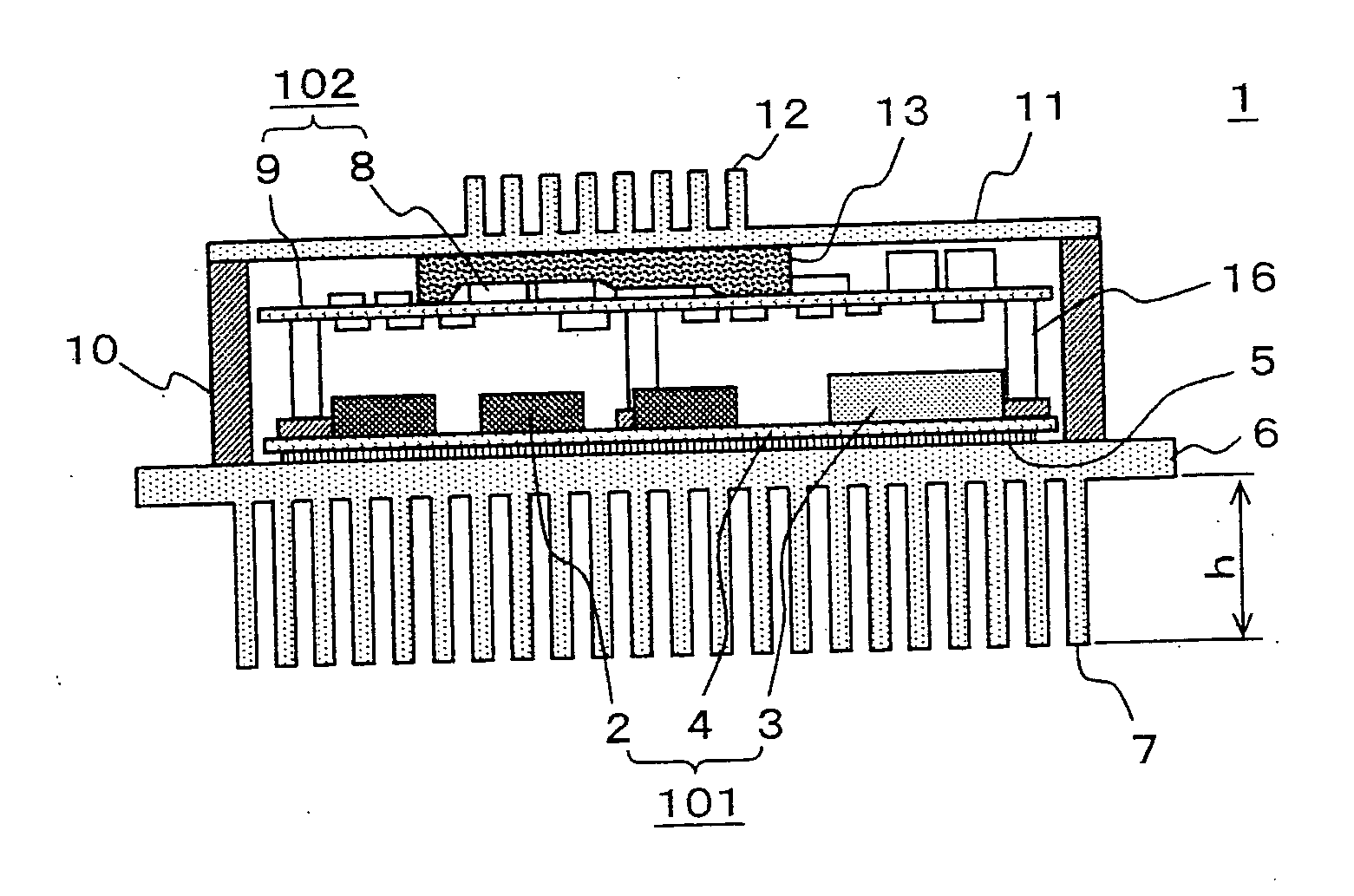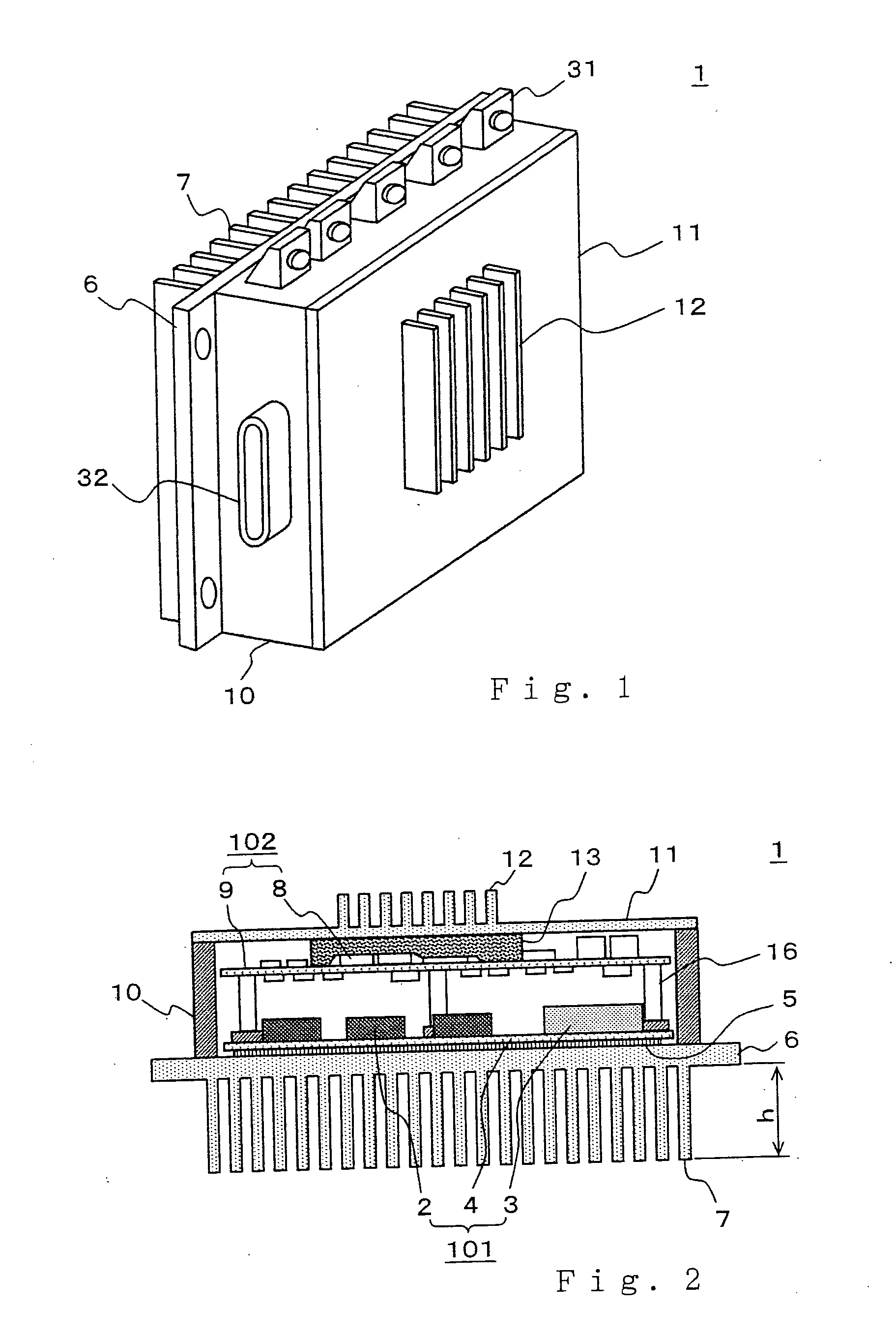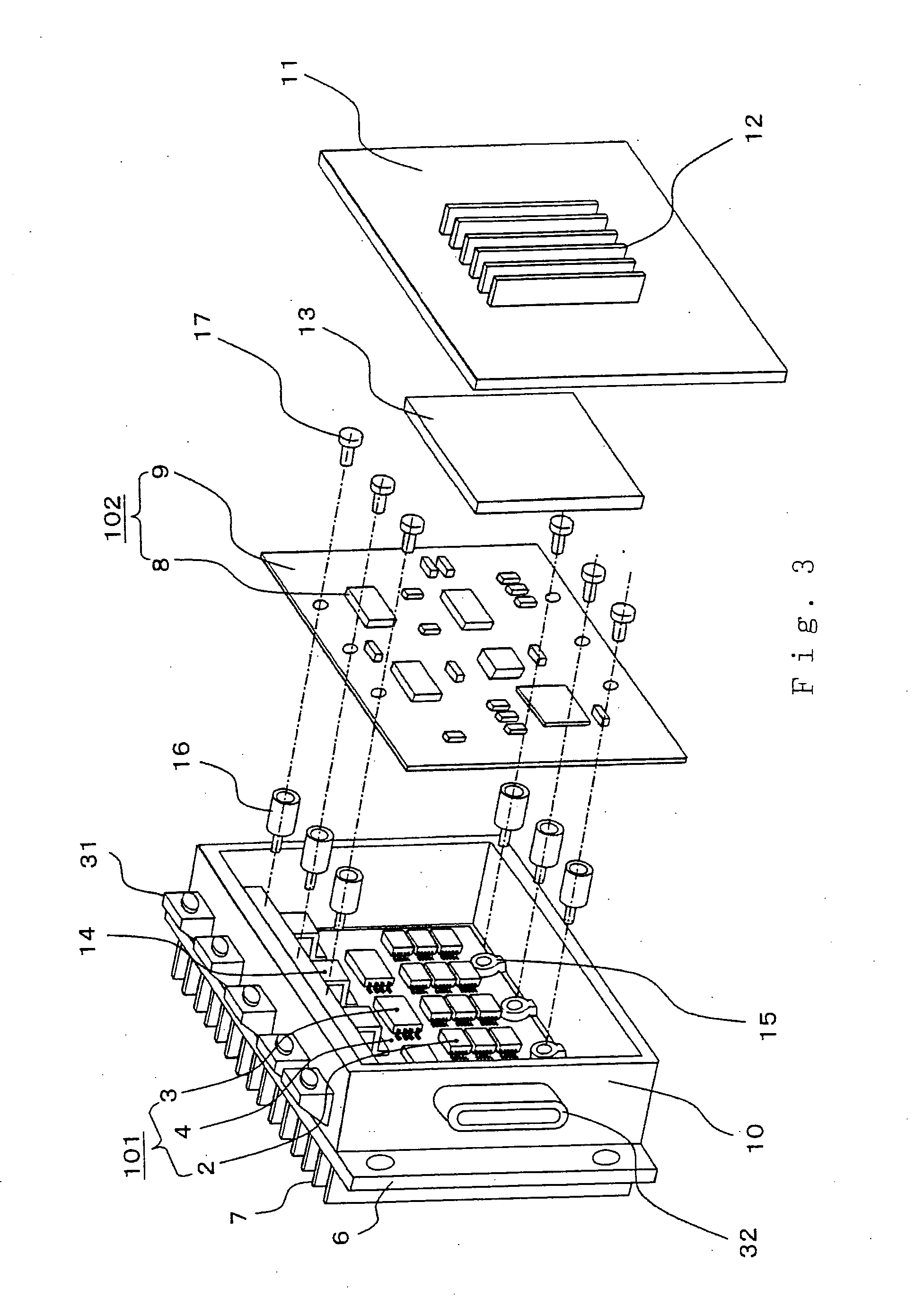Vehicular power converter
a power converter and case technology, applied in the direction of cooling/ventilation/heating modification, semiconductor/solid-state device details, semiconductor devices, etc., can solve the problems of increased costs, limited reliability, and inability to provide ventilating holes in the case for the above-mentioned vehicle-mounted application, and achieve high reliability and effectively radiate heat generated
- Summary
- Abstract
- Description
- Claims
- Application Information
AI Technical Summary
Benefits of technology
Problems solved by technology
Method used
Image
Examples
embodiment 1
[0025] Hereinafter, a vehicular power converter according to Embodiment 1 will be described with reference to the accompanying drawings. FIG. 1 is a perspective view showing an outline view of a vehicular power converter according to Embodiment 1; FIG. 2 is a sectional view thereof; and FIG. 3 is an exploded perspective view.
[0026] First, the outline of a power converter 1, as shown in FIG. 1, includes a base plate 6 having a first heat exchange section 7, in which a power circuit section to be described later is mounted; a peripheral wall surface member 10 for placing a power circuit section and a control circuit section to be described later; and a cover 11 having a second heat exchange section 12. An external terminal 31, which is a conductive member for electrically coupling in and out of the power converter 1, and a signal connector 32 are mounted on the peripheral wall surface member 10.
[0027] Next, the internal configuration will be explained with reference to FIG. 2 and FI...
embodiment 2
[0044]FIG. 4 is an exploded perspective view of a vehicular power converter according to Embodiment 2 and FIG. 5 is a sectional view thereof. In the figures, those equivalent to FIG. 1 to FIG. 3 described in Embodiment 1 are shown by the same reference numbers and their description will not be repeated. One difference from Embodiment 1 is a heat shield member 18 which is provided between the power circuit section 101 and the control circuit section 102, and therefore, the heat shield member 18 will be mainly described.
[0045] As shown in the figures, mounting of the heat shield member 18 is carried out so that supporting members 19 are first mounted to protrusions 15 integrally formed on a peripheral wall surface member 10, then mounting pads 18a of the heat shield member 18 are aligned with the supporting members 19, and the heat shield member 18 is fixed with supporting members 20.
[0046] Next, mounting of the control circuit section 102 is carried out so that mounting holes of th...
embodiment 3
[0056]FIG. 6 is a partial sectional view of an essential part of a vehicular power converter according to Embodiment 3. The entire device is equivalent to FIG. 1 explained in Embodiment 1, and the entire sectional view except for that shown in FIG. 6 is equivalent to FIG. 2 of Embodiment 1 or FIG. 5 of Embodiment 2, and therefore, equivalent parts are shown by the same reference numbers and their description will not be repeated and only different parts will be mainly described.
[0057] As shown in the figure, electronic components 8 are mounted on both sides of a control substrate 9 which constitutes a control circuit section 102. The electronic components 8 generate heat when current is supplied, and an electronic component generating a particularly large amount of heat among the electronic components is denoted as heat generating components 22 to discriminate it. The heat generating component s 22 are, for example, a voltage regulator 22a of a power supply circuit section, a drive...
PUM
 Login to View More
Login to View More Abstract
Description
Claims
Application Information
 Login to View More
Login to View More - Generate Ideas
- Intellectual Property
- Life Sciences
- Materials
- Tech Scout
- Unparalleled Data Quality
- Higher Quality Content
- 60% Fewer Hallucinations
Browse by: Latest US Patents, China's latest patents, Technical Efficacy Thesaurus, Application Domain, Technology Topic, Popular Technical Reports.
© 2025 PatSnap. All rights reserved.Legal|Privacy policy|Modern Slavery Act Transparency Statement|Sitemap|About US| Contact US: help@patsnap.com



